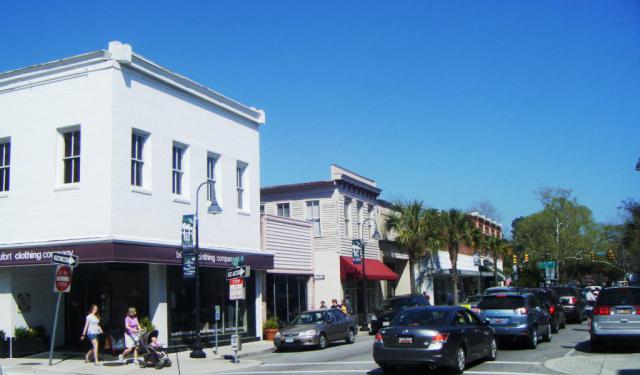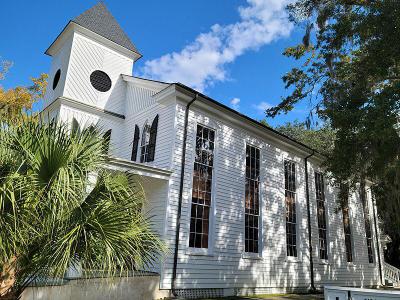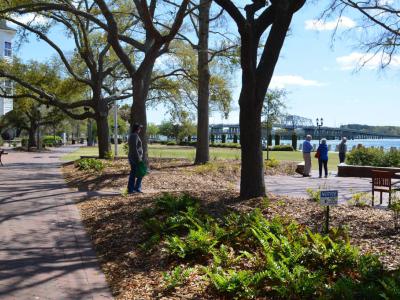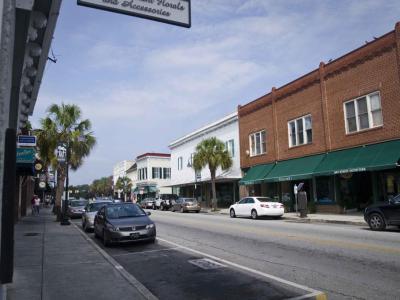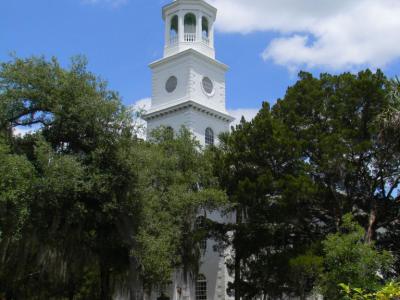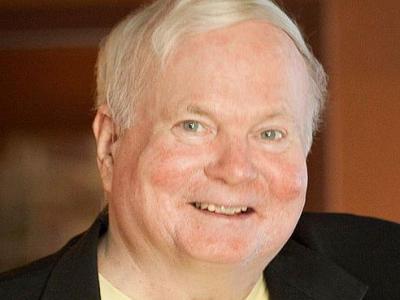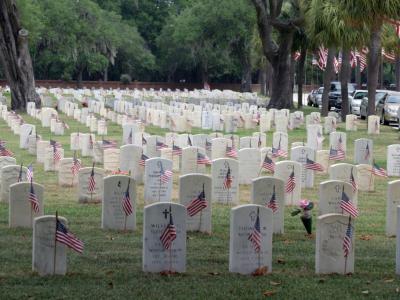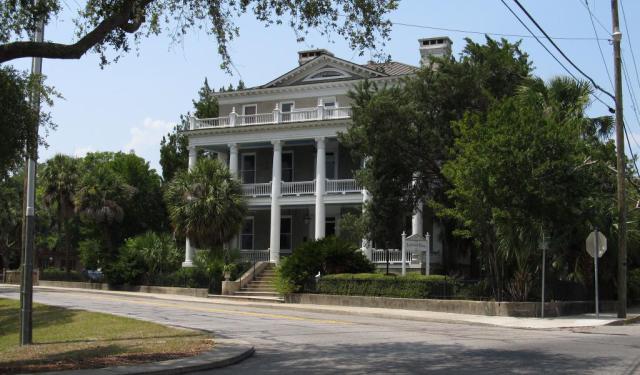Beaufort Introduction Walking Tour (Self Guided), Beaufort
Named the "Most Romantic City" in South Carolina, Beaufort – located just outside of Hilton Head – is overflowing with charm.
This coastal gem has a storied past that stretches back 500 years as the site of the second European landing in North America, the Spanish exploration led by Captain Pedro de Salazar. In 1711, British colonists founded a city in the area and named it for Henry Somerset, 2nd Duke of Beaufort. Initially, the city faced challenges from Native American tribes and the Spanish Empire, but eventually, during the era of slavery, it thrived as a shipbuilding and later a plantation center.
During the Civil War, Union forces occupied Beaufort, attracting escaped slaves and initiating emancipation efforts. Phosphate mining sustained the city until natural disasters in 1893 and 1907 caused economic turmoil.
In the latter 20th century, tourism and military growth revitalized Beaufort. Preservation efforts earned acclaim for its historic character and quality of life. Presently, a protective historical association allows tourists to step back in time walking along the centuries-old streets of Beaufort lined with massive live oaks. The expansive green space invites leisurely strolls under the Spanish moss to escape the hot Southern sun.
One of the city's most notable attractions is the Beaufort History Museum. It provides a comprehensive look into the city's role during the Civil War, its connection to the Gullah Geechee culture, and the significance of the local Sea Islands in American history.
Henry C Chambers Waterfront Park is the heart of Beaufort, offering a serene escape by the water's edge. Nearby, Bay Street beckons with its unique boutiques, galleries, and restaurants, where you can savor the flavors of Lowcountry cuisine.
For those seeking a deeper connection to Beaufort's spiritual history, the Parish Church of Saint Helena, founded in 1712, stands as a testament to the enduring faith of its community. Pat Conroy Literary Center pays homage to the renowned author, who called Beaufort his home and found inspiration in its beauty.
Meanwhile, the Beaufort National Cemetery is a solemn reminder of the sacrifices made by local brave men and women throughout American history.
A true South Carolina treasure of a city, Beaufort makes a perfect getaway for a weekend, a family trip, or a solo traveler. A visit here will greet you with Southern charm and hospitality. Whether it is romance, history, or adventure that you seek, chances are that you'll find it all here. So, take this self-guided introductory walk and discover the best attractions Beaufort has to offer.
This coastal gem has a storied past that stretches back 500 years as the site of the second European landing in North America, the Spanish exploration led by Captain Pedro de Salazar. In 1711, British colonists founded a city in the area and named it for Henry Somerset, 2nd Duke of Beaufort. Initially, the city faced challenges from Native American tribes and the Spanish Empire, but eventually, during the era of slavery, it thrived as a shipbuilding and later a plantation center.
During the Civil War, Union forces occupied Beaufort, attracting escaped slaves and initiating emancipation efforts. Phosphate mining sustained the city until natural disasters in 1893 and 1907 caused economic turmoil.
In the latter 20th century, tourism and military growth revitalized Beaufort. Preservation efforts earned acclaim for its historic character and quality of life. Presently, a protective historical association allows tourists to step back in time walking along the centuries-old streets of Beaufort lined with massive live oaks. The expansive green space invites leisurely strolls under the Spanish moss to escape the hot Southern sun.
One of the city's most notable attractions is the Beaufort History Museum. It provides a comprehensive look into the city's role during the Civil War, its connection to the Gullah Geechee culture, and the significance of the local Sea Islands in American history.
Henry C Chambers Waterfront Park is the heart of Beaufort, offering a serene escape by the water's edge. Nearby, Bay Street beckons with its unique boutiques, galleries, and restaurants, where you can savor the flavors of Lowcountry cuisine.
For those seeking a deeper connection to Beaufort's spiritual history, the Parish Church of Saint Helena, founded in 1712, stands as a testament to the enduring faith of its community. Pat Conroy Literary Center pays homage to the renowned author, who called Beaufort his home and found inspiration in its beauty.
Meanwhile, the Beaufort National Cemetery is a solemn reminder of the sacrifices made by local brave men and women throughout American history.
A true South Carolina treasure of a city, Beaufort makes a perfect getaway for a weekend, a family trip, or a solo traveler. A visit here will greet you with Southern charm and hospitality. Whether it is romance, history, or adventure that you seek, chances are that you'll find it all here. So, take this self-guided introductory walk and discover the best attractions Beaufort has to offer.
How it works: Download the app "GPSmyCity: Walks in 1K+ Cities" from Apple App Store or Google Play Store to your mobile phone or tablet. The app turns your mobile device into a personal tour guide and its built-in GPS navigation functions guide you from one tour stop to next. The app works offline, so no data plan is needed when traveling abroad.
Beaufort Introduction Walking Tour Map
Guide Name: Beaufort Introduction Walking Tour
Guide Location: USA » Beaufort (See other walking tours in Beaufort)
Guide Type: Self-guided Walking Tour (Sightseeing)
# of Attractions: 8
Tour Duration: 2 Hour(s)
Travel Distance: 3.1 Km or 1.9 Miles
Author: DanaOffice
Sight(s) Featured in This Guide:
Guide Location: USA » Beaufort (See other walking tours in Beaufort)
Guide Type: Self-guided Walking Tour (Sightseeing)
# of Attractions: 8
Tour Duration: 2 Hour(s)
Travel Distance: 3.1 Km or 1.9 Miles
Author: DanaOffice
Sight(s) Featured in This Guide:
- Beaufort History Museum
- Beth Israel Congregation
- First African Baptist Church
- Henry C. Chambers Waterfront Park
- Bay Street
- Parish Church of St. Helena
- Pat Conroy Literary Center
- Beaufort National Cemetery
1) Beaufort History Museum
Beaufort has a long and storied history, dating back to its founding in 1711, and played a significant role in various historical periods, including the American Revolution and the Civil War. The The Beaufort History Museum serves as a gateway to understanding the area's past.
Beaufort played a role in the American Revolutionary War, with the Battle of Grays Hill occurring just outside the town. Notably, Thomas Heyward, Jr., a plantation owner from the Beaufort District, signed the Declaration of Independence.
Beaufort's history is also intertwined with the lead-up to the American Civil War. It was in Beaufort that prominent residents secretly met to plan secession from the Union, an event associated with the "Secession House" on Craven Street.
During the Civil War, Beaufort witnessed significant changes as Union forces sailed into Port Royal Sound. Many of the town's white residents abandoned their homes, and Beaufort became a Union headquarters. Some of the antebellum mansions were converted into hospitals for wounded soldiers.
The Beaufort History Museum features a diverse range of exhibits and collections that chronicle the town's history. Visitors can explore artifacts, photographs, documents, and interactive displays that highlight various aspects of Beaufort's past, including its role in the American Civil War, its African American heritage, and its Gullah Geechee culture.
Visitors to the Beaufort History Museum can expect to hear these stories and learn much more about how Beaufort's history influenced the course of America's history.
Beaufort played a role in the American Revolutionary War, with the Battle of Grays Hill occurring just outside the town. Notably, Thomas Heyward, Jr., a plantation owner from the Beaufort District, signed the Declaration of Independence.
Beaufort's history is also intertwined with the lead-up to the American Civil War. It was in Beaufort that prominent residents secretly met to plan secession from the Union, an event associated with the "Secession House" on Craven Street.
During the Civil War, Beaufort witnessed significant changes as Union forces sailed into Port Royal Sound. Many of the town's white residents abandoned their homes, and Beaufort became a Union headquarters. Some of the antebellum mansions were converted into hospitals for wounded soldiers.
The Beaufort History Museum features a diverse range of exhibits and collections that chronicle the town's history. Visitors can explore artifacts, photographs, documents, and interactive displays that highlight various aspects of Beaufort's past, including its role in the American Civil War, its African American heritage, and its Gullah Geechee culture.
Visitors to the Beaufort History Museum can expect to hear these stories and learn much more about how Beaufort's history influenced the course of America's history.
2) Beth Israel Congregation
Beth Israel Congregation holds a special place in Beaufort's history as one of the oldest continuously operating synagogues in South Carolina. The congregation was founded in the late 19th century by Jewish immigrants who settled in Beaufort. These early members came from various backgrounds and played a role in the economic and social life of the town.
The synagogue is a single-story wooden structure with an exterior covered entirely in white-painted clapboard siding. This choice of material and color is characteristic of the Colonial Revival style, which often draws inspiration from early American architecture.
The roof of the synagogue is a metal seam front-gable roof. The front gable design is a prominent feature of the building's facade. A brick chimney is located on the south side of the building, serving both functional and decorative purposes. The front of the synagogue features a front-gable-shaped portico that protrudes from the main structure. Beneath the portico, the ceiling is painted Haint Blue, a traditional color believed to ward off evil spirits in Southern folklore.
The front entrance is adorned with a wooden double door. Above the door, the synagogue's emblem is displayed, reading "Beth Israel Cong." in both English and Hebrew. In the center of the emblem is a Star of David, symbolizing the Jewish faith.
The synagogue is a single-story wooden structure with an exterior covered entirely in white-painted clapboard siding. This choice of material and color is characteristic of the Colonial Revival style, which often draws inspiration from early American architecture.
The roof of the synagogue is a metal seam front-gable roof. The front gable design is a prominent feature of the building's facade. A brick chimney is located on the south side of the building, serving both functional and decorative purposes. The front of the synagogue features a front-gable-shaped portico that protrudes from the main structure. Beneath the portico, the ceiling is painted Haint Blue, a traditional color believed to ward off evil spirits in Southern folklore.
The front entrance is adorned with a wooden double door. Above the door, the synagogue's emblem is displayed, reading "Beth Israel Cong." in both English and Hebrew. In the center of the emblem is a Star of David, symbolizing the Jewish faith.
3) First African Baptist Church
First African Baptist Church was established by freed slaves after the American Civil War, symbolizing the determination of the African American community to create a place of worship and community in the wake of emancipation. The church's history dates back to 1865 when it began as a praise house known as "Baptist Church Colored." Praise houses were integral to the Sea Islands and provided spaces for worship, social events, and educational activities for African Americans. According to a historical marker at the church, it is constructed in the Carpenter Gothic style.
First African Baptist Church gained recognition for its sizable congregation and was once described as "one of the most aristocratic colored churches." Robert Smalls, a Civil War hero, state legislator, and U.S. Congressman, was one of the church's most prominent members. His association with the church adds to its historical significance.
During the Civil War, the site served as a school as part of the Port Royal Experiment, underscoring its role in educational and social advancement during a transformative period in American history.
First African Baptist Church is situated within the Beaufort Historic District, further emphasizing its significance as a historical and cultural landmark in the town.
First African Baptist Church gained recognition for its sizable congregation and was once described as "one of the most aristocratic colored churches." Robert Smalls, a Civil War hero, state legislator, and U.S. Congressman, was one of the church's most prominent members. His association with the church adds to its historical significance.
During the Civil War, the site served as a school as part of the Port Royal Experiment, underscoring its role in educational and social advancement during a transformative period in American history.
First African Baptist Church is situated within the Beaufort Historic District, further emphasizing its significance as a historical and cultural landmark in the town.
4) Henry C. Chambers Waterfront Park (must see)
Henry C. Chambers Waterfront Park serves as a beloved gathering place for residents and a popular destination for visitors. The park is situated along the waterfront of the Beaufort River, offering breathtaking views of the river, nearby islands, and the Intracoastal Waterway.
The Park is named after Henry C. Chambers, a former mayor of Beaufort known for his dedication to the preservation and revitalization of the town's historic district.
The park is beautifully landscaped with a variety of trees, flowers, and green spaces. Visitors can enjoy leisurely strolls along the paved pathways or simply relax on benches while taking in the natural beauty of the surroundings. Henry C. Chambers Waterfront Park includes a playground area for children, making it a family-friendly destination. There are also picnic areas where visitors can enjoy a meal with scenic riverfront views.
The playful addition of fountains adds a charming and refreshing element to the park's ambiance. The fountains are especially popular during warm weather and provide a delightful backdrop for photos.
The park hosts a variety of events and festivals throughout the year, including concerts, art festivals, and community gatherings.
The Park is named after Henry C. Chambers, a former mayor of Beaufort known for his dedication to the preservation and revitalization of the town's historic district.
The park is beautifully landscaped with a variety of trees, flowers, and green spaces. Visitors can enjoy leisurely strolls along the paved pathways or simply relax on benches while taking in the natural beauty of the surroundings. Henry C. Chambers Waterfront Park includes a playground area for children, making it a family-friendly destination. There are also picnic areas where visitors can enjoy a meal with scenic riverfront views.
The playful addition of fountains adds a charming and refreshing element to the park's ambiance. The fountains are especially popular during warm weather and provide a delightful backdrop for photos.
The park hosts a variety of events and festivals throughout the year, including concerts, art festivals, and community gatherings.
5) Bay Street (must see)
Bay Street in Beaufort is more than just a street; it's the heart and soul of this historic coastal town. It runs along the picturesque waterfront of the Beaufort Historic District, which is known for its well-preserved antebellum architecture and historical significance. It is a central artery through the heart of the town, offering visitors a chance to explore Beaufort's rich history and culture.
One of the highlights of Bay Street is its stunning waterfront location along the Beaufort River. Visitors can enjoy breathtaking views of the river and the nearby islands, including Lady's Island and Port Royal Island. The scenic beauty of the area adds to the street's appeal.
Bay Street is lined with an array of charming boutique shops, art galleries, and specialty stores. Visitors can browse through unique gifts, art pieces, clothing, and more. The street is a popular destination for shopping and finding one-of-a-kind souvenirs.
The street is also home to a diverse range of restaurants, cafes, and eateries. From casual seafood joints to upscale dining establishments, Bay Street offers a variety of culinary experiences. Visitors can savor delicious Lowcountry cuisine and fresh seafood while enjoying the waterfront ambiance.
Along Bay Street, you'll find cultural attractions such as the Beaufort History Museum and the Beaufort Arts Council. The Street is a hub of activity during various festivals and events held throughout the year. These events often feature live music, arts and crafts vendors, food vendors, and other forms of entertainment. The street comes alive during occasions like the Beaufort Water Festival and various holiday celebrations.
One of the highlights of Bay Street is its stunning waterfront location along the Beaufort River. Visitors can enjoy breathtaking views of the river and the nearby islands, including Lady's Island and Port Royal Island. The scenic beauty of the area adds to the street's appeal.
Bay Street is lined with an array of charming boutique shops, art galleries, and specialty stores. Visitors can browse through unique gifts, art pieces, clothing, and more. The street is a popular destination for shopping and finding one-of-a-kind souvenirs.
The street is also home to a diverse range of restaurants, cafes, and eateries. From casual seafood joints to upscale dining establishments, Bay Street offers a variety of culinary experiences. Visitors can savor delicious Lowcountry cuisine and fresh seafood while enjoying the waterfront ambiance.
Along Bay Street, you'll find cultural attractions such as the Beaufort History Museum and the Beaufort Arts Council. The Street is a hub of activity during various festivals and events held throughout the year. These events often feature live music, arts and crafts vendors, food vendors, and other forms of entertainment. The street comes alive during occasions like the Beaufort Water Festival and various holiday celebrations.
6) Parish Church of St. Helena (must see)
Established in 1712 as a colonial parish of the Church of England, the Parish Church of Saint Helena is among the oldest churches in North America and is a contributing property to the Beaufort Historic District.
The Parish Church of Saint Helena is a remarkable example of colonial Georgian architecture, with its west facade showcasing the Federal style. Notably, the church's imposing west end steeple, designed by Albert Simons, was added in 1942, providing a striking architectural feature. It is worth noting that the church did not have a steeple between 1817 and 1942. The stately exterior of the historic church is adorned with iconic white pillared columns, lending an air of grandeur to its presence.
Adjacent to the church lies a churchyard of immense historical significance. This hallowed ground is the final resting place of many of Beaufort's founding fathers, including Colonel John Barnwell, also known as Tuscarora Jack, who played a pivotal role in the Tuscarora and Yemassee Wars. Additionally, two British officers who fell during the Battle of Port Royal and two Confederate officers find their eternal rest here, further connecting the church to the tapestry of American history.
The Parish Church of Saint Helena is a remarkable example of colonial Georgian architecture, with its west facade showcasing the Federal style. Notably, the church's imposing west end steeple, designed by Albert Simons, was added in 1942, providing a striking architectural feature. It is worth noting that the church did not have a steeple between 1817 and 1942. The stately exterior of the historic church is adorned with iconic white pillared columns, lending an air of grandeur to its presence.
Adjacent to the church lies a churchyard of immense historical significance. This hallowed ground is the final resting place of many of Beaufort's founding fathers, including Colonel John Barnwell, also known as Tuscarora Jack, who played a pivotal role in the Tuscarora and Yemassee Wars. Additionally, two British officers who fell during the Battle of Port Royal and two Confederate officers find their eternal rest here, further connecting the church to the tapestry of American history.
7) Pat Conroy Literary Center
The Pat Conroy Literary Center serves as a testament to the enduring legacy of the beloved American writer, Pat Conroy. This literary center is dedicated to nurturing a vibrant and inclusive community of readers and writers, paying homage to Pat Conroy's lifelong dedication to fostering a deep love for literature and the written word among future generations.
Pat Conroy, who began his career in Beaufort as a teacher, would go on to achieve acclaim as one of America's most cherished authors. He was renowned not only for his exceptional storytelling prowess but also for his unwavering commitment to honesty and his profound compassion for humanity.
At the Pat Conroy Literary Center, the spirit of Pat's literary passion lives on. The center provides a nurturing space where book clubs and writing groups can convene, fostering a sense of community and shared enthusiasm for literature. It offers master classes in various genres, including poetry, memoir, and fiction, providing aspiring and seasoned writers of all ages with opportunities to enhance their craft.
Pat Conroy, who began his career in Beaufort as a teacher, would go on to achieve acclaim as one of America's most cherished authors. He was renowned not only for his exceptional storytelling prowess but also for his unwavering commitment to honesty and his profound compassion for humanity.
At the Pat Conroy Literary Center, the spirit of Pat's literary passion lives on. The center provides a nurturing space where book clubs and writing groups can convene, fostering a sense of community and shared enthusiasm for literature. It offers master classes in various genres, including poetry, memoir, and fiction, providing aspiring and seasoned writers of all ages with opportunities to enhance their craft.
8) Beaufort National Cemetery (must see)
Beaufort National Cemetery was established in 1863 during the American Civil War. The cemetery's historical significance is closely tied to this tumultuous period in American history and received recognition when it was listed on the National Register of Historic Places in 1997. Within the cemetery grounds, visitors can find various commemorative monuments and memorials honoring the sacrifices of the veterans.
Beaufort National Cemetery is the final resting place for thousands of veterans, including those who served in the Civil War, Spanish-American War, World War I, World War II, the Korean War, the Vietnam War, and subsequent conflicts. It is open to eligible veterans, their spouses, and dependent children.
In 1987, a remarkable discovery took place on Folly Island, South Carolina, when the remains of nineteen Union soldiers were found. These soldiers were part of the Massachusetts 55th Volunteer Infantry, stationed on Folly Island from late 1863 to early 1864 during the American Civil War. This unit is often recognized as a sister unit to the more well-known Massachusetts 54th Volunteer Infantry, famously depicted in the film "Glory." The excavations unearthed a variety of items, including leather shoes, rubberized canvas, wood staves, and animal bones, providing valuable insights into the lives of the soldiers stationed on Folly Island.
On May 29, 1989 the soldiers of the Massachusetts 54th Volunteer Infantry, along with the body of their commanding officer, Colonel Robert Gould Shaw, were reinterred at the cemetery with full military honors. Notably, cast members from the film "Glory" served as the honor guard at this poignant ceremony, paying tribute to the historical significance of the Massachusetts 54th.
The cemetery is open to the public, allowing visitors to pay their respects, reflect on the sacrifices made by veterans, and explore the history of the site. Many visitors come to Beaufort National Cemetery to participate in Memorial Day and Veterans Day ceremonies, which are held annually to honor and remember those who served.
Beaufort National Cemetery is the final resting place for thousands of veterans, including those who served in the Civil War, Spanish-American War, World War I, World War II, the Korean War, the Vietnam War, and subsequent conflicts. It is open to eligible veterans, their spouses, and dependent children.
In 1987, a remarkable discovery took place on Folly Island, South Carolina, when the remains of nineteen Union soldiers were found. These soldiers were part of the Massachusetts 55th Volunteer Infantry, stationed on Folly Island from late 1863 to early 1864 during the American Civil War. This unit is often recognized as a sister unit to the more well-known Massachusetts 54th Volunteer Infantry, famously depicted in the film "Glory." The excavations unearthed a variety of items, including leather shoes, rubberized canvas, wood staves, and animal bones, providing valuable insights into the lives of the soldiers stationed on Folly Island.
On May 29, 1989 the soldiers of the Massachusetts 54th Volunteer Infantry, along with the body of their commanding officer, Colonel Robert Gould Shaw, were reinterred at the cemetery with full military honors. Notably, cast members from the film "Glory" served as the honor guard at this poignant ceremony, paying tribute to the historical significance of the Massachusetts 54th.
The cemetery is open to the public, allowing visitors to pay their respects, reflect on the sacrifices made by veterans, and explore the history of the site. Many visitors come to Beaufort National Cemetery to participate in Memorial Day and Veterans Day ceremonies, which are held annually to honor and remember those who served.
Walking Tours in Beaufort, South Carolina
Create Your Own Walk in Beaufort
Creating your own self-guided walk in Beaufort is easy and fun. Choose the city attractions that you want to see and a walk route map will be created just for you. You can even set your hotel as the start point of the walk.
Beaufort Historic Houses Walking Tour
Beaufort, South Carolina, a city rich in history, is full of architectural gems: stately, historic properties reflecting a variety of styles. The local Historic District is a mix of Federal, Neoclassical, and Greek Revival architecture, with many homes predating the Civil War.
The Barnwell-Gough House, an exquisite example of Federal-style architecture, stands proudly with its classic symmetry... view more
Tour Duration: 2 Hour(s)
Travel Distance: 2.5 Km or 1.6 Miles
The Barnwell-Gough House, an exquisite example of Federal-style architecture, stands proudly with its classic symmetry... view more
Tour Duration: 2 Hour(s)
Travel Distance: 2.5 Km or 1.6 Miles
The Most Popular Cities
/ view all
